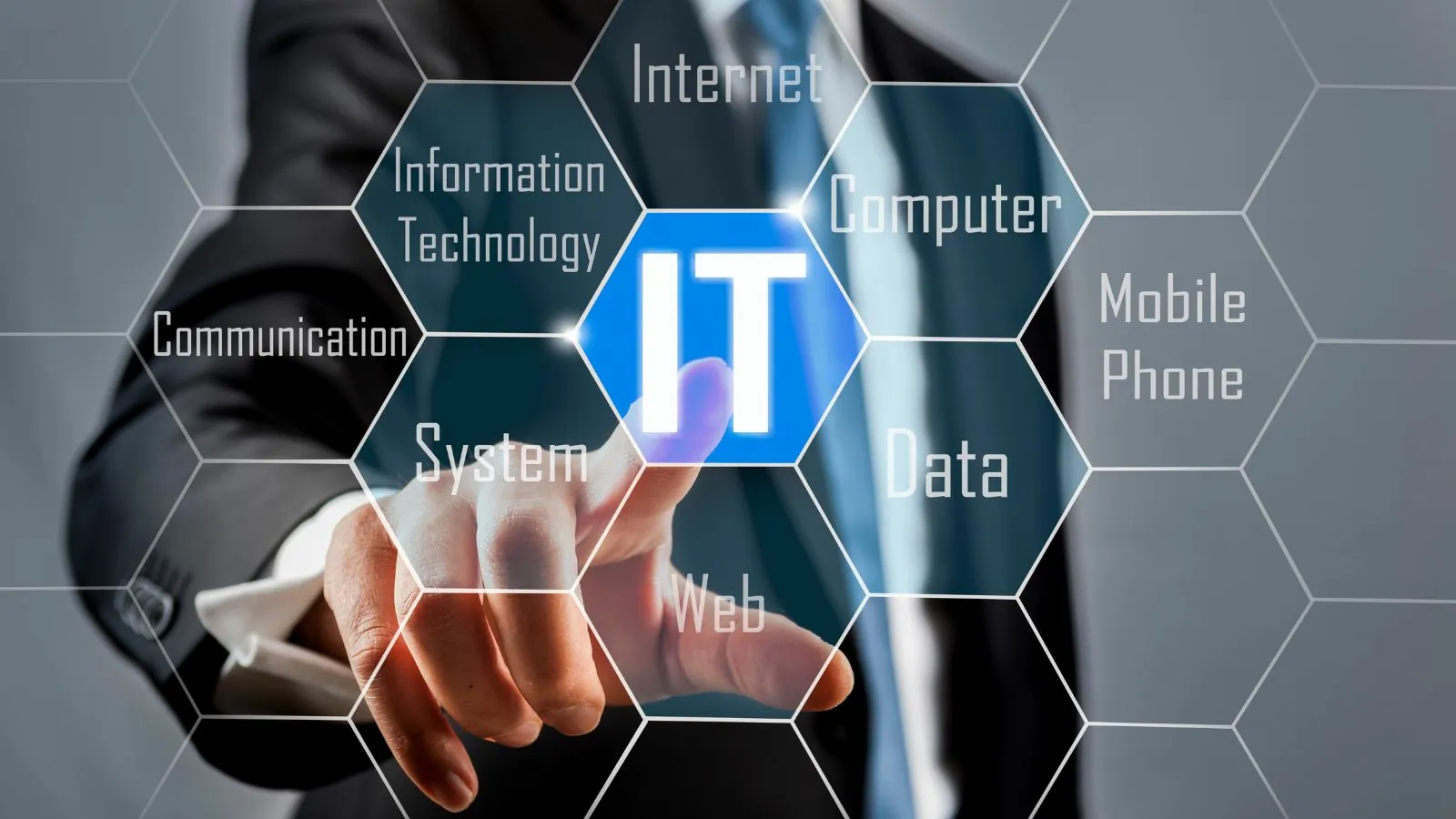Are you constantly juggling disparate software subscriptions, dealing with unexpected downtime, and wondering if your customer data is truly secure? For many business leaders, this state of constant IT “firefighting” feels normal, but it drains time, money, and focus.
The root of this chaos often lies in an unseen problem: “patchwork IT.”
“This is effectively technical debt in action—an unsystematic accumulation of disconnected technologies, built out of short-term necessity rather than through a cohesive, long-term strategy.”
— Forbes: “The Tech Debt Problem: Why Automation And Consolidation Matter”
While this approach might seem cost-effective at first, it silently sabotages productivity, jeopardizes security, and stifles your company’s potential. This article exposes the hidden costs of patchwork IT and provides a clear, actionable roadmap to transform your technology from a frustrating liability into a powerful strategic asset that fuels sustainable growth.
Table of Contents
ToggleKey Takeaways
- Fragmented “patchwork IT” systems create significant hidden costs through wasted productivity, redundant software spending, and increased cybersecurity risks. According to recent data, the average cost of a data breach for U.S. companies has soared to over $10 million.
- Disjointed IT infrastructure is a direct barrier to scalability and innovation. It prevents the data-driven decision-making and adoption of future-proof technologies like AI that are necessary to stay competitive.
- A strategic 5-step roadmap is essential for moving to an integrated system. This process begins with a comprehensive assessment of your current state and aligns your future technology directly with your core business goals.
- Partnering with an expert tech consulting firm provides the strategic guidance, proactive support, and long-term vision needed to successfully transform IT from a liability into a true competitive advantage.
1. What is Patchwork IT? The Telltale Signs in Your Organization
Patchwork IT doesn’t happen overnight. It develops organically as a business grows—a new software tool is added for marketing, a different one for finance, a legacy application is kept because it “still works,” and various cloud services are adopted by different teams without central oversight. Each decision makes sense in isolation, but together they create a tangled web of technological debt.
This reactive approach leads to a system that is brittle, inefficient, and expensive to maintain. Do any of these symptoms sound familiar?
- Manual Workarounds: Employees regularly rely on manual data transfers, copy-pasting between applications, or complex spreadsheets to bridge gaps between systems.
- User Complaints: Your team frequently complains about needing multiple logins for different tools, inconsistent user interfaces, or slow system performance that hampers their work.
- Reactive Support: The majority of your IT support requests are reactive “break-fix” issues rather than proactive maintenance or strategic improvements.
- No Clear Inventory: You lack a consolidated, clear inventory of all your IT assets, software licenses, and cloud subscriptions, making it impossible to track spending and usage accurately.
- Complex Onboarding: Bringing a new employee into the company involves a complicated, multi-step IT setup process across numerous disconnected platforms.
- Siloed Data: It’s difficult or impossible to generate unified reports or gain a holistic view of business operations because critical data is trapped in separate, non-communicating systems.
If several of these signs resonate with you, you’re not alone. Recognizing the problem is the critical first step. The next is to understand the full scope of its impact on your specific operations, security posture, and budget. To gain that clarity, many business leaders find that a professional evaluation provides the data-driven insights needed to build a truly strategic technology plan. To help local companies gain that clarity, Anaheim IT consulting can deliver a comprehensive assessment of systems, workflows, and security, along with actionable recommendations tailored to optimize technology investments and operational efficiency.
2. The Real Financial Drain: Uncovering the Hidden Costs of Patchwork IT

Direct & Indirect Operational Costs
A fragmented IT environment is inherently inefficient. These operational costs add up quickly, directly impacting your bottom line through:
- Wasted Productivity
- Redundant Spending
- Increased Support Burden
The Crippling Cost of Security Vulnerabilities & Non-Compliance
This risk isn’t trivial; according to a recent IBM report highlighted by CyberScoop, the average cost of a data breach for U.S. companies jumped 9% to an all-time high of $10.22 million in 2025. The cascading costs extend far beyond direct recovery, including regulatory fines, legal fees, reputational damage, and a permanent loss of customer trust. For businesses in regulated sectors like healthcare, the financial fallout is even more severe. As VikingCloud reports, average breach costs in this industry far exceed the general average, presently at around $9.77 million.
3. The Silent Growth Killer: How Fragmented IT Stifles Scalability and Innovation
The problems with patchwork IT go beyond day-to-day costs and security risks. This approach actively sabotages your company’s future by creating barriers to growth, agility, and innovation. It silently kills your long-term potential.
A fragmented system acts as a barrier to scalability. When your core systems aren’t integrated, expanding your operations—whether adding new employees, opening a new location, or launching a new product line—becomes exponentially more complex and costly. Instead of enabling growth, your technology becomes a bottleneck.
Furthermore, it prevents data-driven decisions. When your most critical business data is siloed across a disconnected CRM, ERP, and accounting software, it’s impossible to gain a unified, real-time view of your company’s performance. This lack of visibility makes informed strategic planning and agile responses to market changes nearly impossible.
Finally, patchwork IT stifles innovation and future-proofing. Adopting modern, powerful technologies requires a robust and unified IT foundation. As businesses look to leverage powerful new technologies, a cohesive infrastructure is essential. CloudZero’s State of AI Costs report reveals that AI spending is set to surge by 36% in 2025, reflecting a major shift toward complex initiatives that fragmented systems simply can’t support. By clinging to an outdated, piecemeal structure, you lock your business into inefficient processes and fall behind more agile competitors.
4. The Roadmap to a Sustainable IT Future: A 5-Step Strategic Plan
Moving away from patchwork IT chaos requires a clear, logical plan. Based on our experience helping businesses transform their technology, we recommend a five-step strategic roadmap. This isn’t about just buying new software; it’s about re-architecting your technology to serve your business.
Step 1: Comprehensive Assessment & Discovery
You can’t fix what you don’t fully understand. The first step is to gain a complete, data-driven picture of your current IT landscape. This involves conducting a thorough IT assessment to inventory all hardware, software, licenses, cloud services, and critical data flows. The goal is to identify precisely where the redundancies, security gaps, and operational pain points exist.
Step 2: Define Your Business Goals & Technology Vision
With a clear understanding of your current state, the next step is to align your IT strategy directly with your overall business objectives. This is a strategic exercise, not just a technical one. Work with key stakeholders across your organization to define your short-term needs and long-term growth aspirations. Do you plan to enter new markets, improve customer service with new tools, or boost internal efficiency through automation? Your technology vision must directly support these goals.
Step 3: Design the Integrated Architecture
Now, you can create the blueprint for a unified, future-proof system. This phase involves making key decisions about your core platforms, such as standardizing on a single cloud-based suite like Microsoft 365 or Google Workspace. You will also plan data migration, define modern security policies, and design how to incorporate technologies like automation to drive new efficiencies. The result should be a customized solution designed for your specific business needs.
Step 4: Phased Implementation & Migration
Executing the plan requires careful management to minimize disruption and control risk. A “big bang” switchover is often too risky for most businesses. We strongly advocate for a phased approach, migrating one department or business function at a time. This methodical rollout should be supported by meticulous project planning, a focus on data integrity, comprehensive user training, and proactive managed IT services to handle any issues that arise during the transition.
Step 5: Measure, Optimize, and Proactively Manage
Your work isn’t done once the new system is live. To ensure ongoing performance and value, you must continuously measure, optimize, and manage the environment. This means setting Key Performance Indicators (KPIs) to track IT effectiveness, such as system uptime, a reduction in support tickets, and user satisfaction. This final step includes continuous security monitoring, timely updates, and regular strategic reviews to ensure your technology continues to align with your evolving business goals.
Crucially, a modern system allows you to measure ROI, overcoming the visibility gap where, according to CloudZero, only 51% of organizations can confidently evaluate AI ROI. This ensures your IT investments are directly tied to tangible business benefits, transforming IT from a cost center into a documented value driver.
Conclusion: From IT Liability to Strategic Asset
Transitioning away from patchwork IT is not merely an IT expense; it’s a fundamental business investment. It’s a strategic move that unlocks enhanced security, drives significant operational efficiency, delivers long-term cost savings, and clears a path for sustainable growth. By untangling the web of disconnected systems, you empower your team with the tools they need to succeed and position your business to adapt and thrive in the future.
This transformation requires expertise, careful planning, and a dedicated partner, such as those from a technology consulting firm for businesses.

